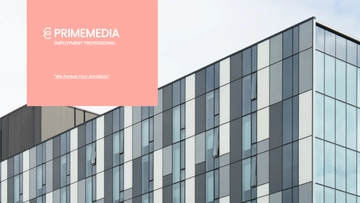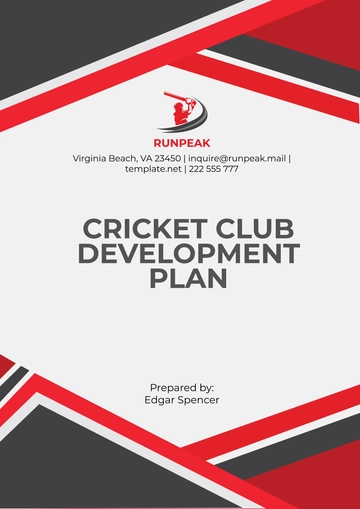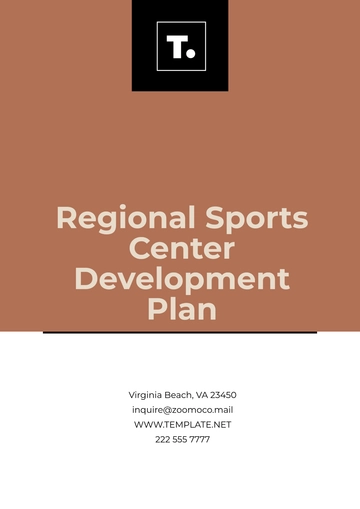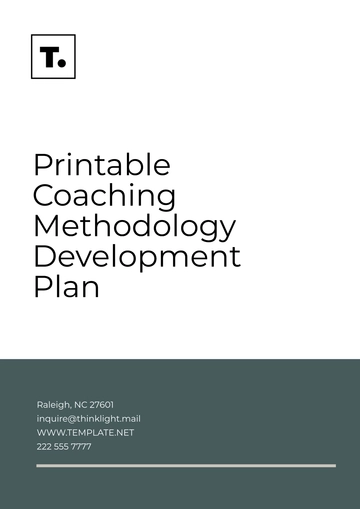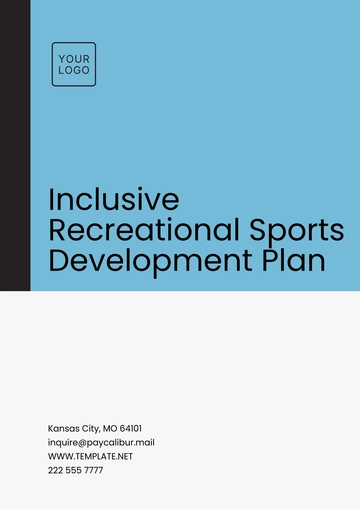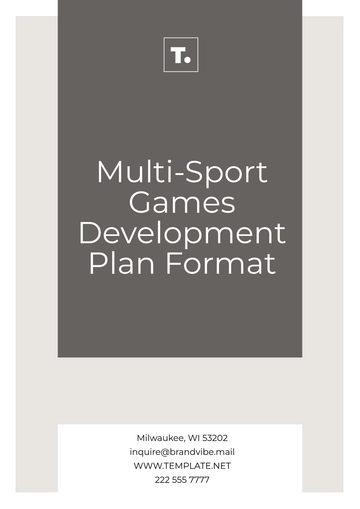Free Restaurant Development Plan

I. Executive Summary
A. Overview of the Restaurant Concept
Our restaurant, [Your Company Name], is envisioned as a upscale casual dining establishment offering a fusion of international cuisines with a focus on locally sourced ingredients and innovative culinary techniques. With a warm and inviting ambiance, [Your Company Name] aims to provide a memorable dining experience that combines exceptional food, attentive service, and an inviting atmosphere.
B. Market Analysis and Opportunity
Through extensive market research, we have identified a growing demand for high-quality dining experiences in the urban area where [Your Company Name] is planned to be located. With a focus on affluent professionals, food enthusiasts, and tourists, there is a clear opportunity to capture a significant market share by offering a unique blend of flavors and a sophisticated dining experience.
C. Key Objectives of the Development Plan
Establish [Your Company Name] as a premier dining destination in the local culinary scene.
Achieve a steady growth in revenue and profitability within the first three years of operation.
Build a loyal customer base through exceptional food, service, and hospitality.
Cultivate a positive work environment that fosters teamwork, creativity, and professional development among staff.
D. Summary of Financial Projections
Based on our financial analysis, we anticipate an initial investment of $[000,000] to cover startup costs and initial operating expenses. With projected revenue growth of 15% annually, we expect to break even within the first two years and achieve a net profit margin of 10% by the end of year three.
II. Concept Development
A. Description of the Restaurant Concept
[Your Company Name] will offer a sophisticated yet approachable dining experience, combining globally inspired dishes with locally sourced ingredients to create an eclectic menu that appeals to a diverse palate. Our restaurant will feature an open kitchen concept, allowing guests to witness the culinary craftsmanship firsthand.
B. Unique Selling Proposition (USP)
Our unique selling proposition lies in our commitment to culinary excellence, sustainability, and creativity. By partnering with local farmers and artisans, we ensure the freshest ingredients while minimizing our environmental footprint. Additionally, our rotating seasonal menu and chef's tasting menu will provide guests with an ever-changing culinary journey.
C. Target Market Analysis
Our target market consists of affluent professionals, food enthusiasts, and tourists seeking elevated dining experiences. With a focus on quality, authenticity, and innovation, [Your Company Name] aims to attract discerning diners who appreciate fine cuisine and exceptional service.
D. Brand Identity and Positioning
[Your Company Name] will position itself as a destination for culinary exploration and gastronomic adventure. Our brand identity will reflect sophistication, creativity, and a passion for food, inviting guests to embark on a culinary journey that tantalizes the senses and leaves a lasting impression.
III. Market Analysis
A. Demographic Analysis of Target Market
The target demographic for [Your Company Name] includes affluent professionals aged 25-55 with disposable income and a penchant for dining out. Additionally, we will cater to food enthusiasts and tourists seeking authentic culinary experiences in the urban area.
B. Competitive Analysis
Competitors in the upscale casual dining segment include established restaurants such as [Competitor 1] and [Competitor 2]. While these restaurants offer similar dining experiences, [Your Company Name] distinguishes itself through its focus on innovation, sustainability, and locally sourced ingredients.
C. Trends and Opportunities in the Restaurant Industry
The restaurant industry is experiencing a shift towards experiential dining, with consumers increasingly seeking unique and memorable culinary experiences. This presents an opportunity for [Your Company Name] to differentiate itself by offering innovative dishes, personalized service, and an immersive dining atmosphere.
D. SWOT Analysis (Strengths, Weaknesses, Opportunities, Threats)
Strengths: Culinary innovation, locally sourced ingredients, prime location.
Weaknesses: Initial brand recognition, competition from established restaurants.
Opportunities: Growing demand for upscale dining experiences, partnerships with local suppliers.
Threats: Economic downturn, changing consumer preferences, competition from new entrants.
IV. Location Selection
A. Criteria for Evaluating Potential Locations
Key criteria for selecting the restaurant location include high foot traffic, proximity to cultural attractions, accessibility, and competitive rental rates.
B. Analysis of Potential Locations
Several potential locations have been identified, including downtown districts and trendy neighborhoods known for their dining scene. Each location is being evaluated based on its suitability for our target market and operational requirements.
C. Selection of Final Location
After careful consideration, we have identified [Location A] as the ideal location for [Your Company Name]. With its central location, vibrant atmosphere, and proximity to cultural landmarks, [Location A] offers the perfect setting for our restaurant concept.
D. Lease Negotiation and Agreement
Negotiations are underway with the property owner to finalize the lease agreement for the chosen location. Terms being discussed include lease duration, rental rates, and tenant improvements.
V. Menu Development
A. Menu Concept and Theme
[Your Company Name]'s menu will feature a diverse selection of dishes inspired by global cuisines, with a focus on seasonal ingredients and creative flavor combinations. Our menu will evolve regularly to showcase the freshest ingredients and highlight culinary trends.
B. Development of Menu Items
Our culinary team is working diligently to develop signature dishes that reflect our restaurant's ethos of innovation, sustainability, and quality. Menu items will range from small plates and sharing platters to hearty mains and indulgent desserts.
C. Pricing Strategy
Menu pricing will be set competitively to reflect the quality of ingredients and the dining experience offered at [Your Company Name]. Pricing will be adjusted periodically to align with market trends and cost fluctuations.
D. Considerations for Seasonality and Dietary Trends
[Your Company Name]'s menu will embrace seasonal ingredients and dietary preferences, offering options for vegetarians, vegans, and individuals with dietary restrictions. Our commitment to sustainability extends to our menu, with an emphasis on locally sourced, organic, and ethically sourced ingredients.
VI. Design and Layout
A. Interior Design Concept
[Your Company Name]'s interior design will strike a balance between elegance and comfort, with modern furnishings, warm lighting, and subtle accents that reflect the restaurant's culinary focus. Earthy tones, natural textures, and botanical elements will create a welcoming ambiance that invites guests to relax and indulge in their dining experience.
B. Floor Plan and Layout Design
The restaurant layout will be designed to optimize space and flow, with designated areas for dining, bar service, and kitchen operations. Seating arrangements will include a mix of cozy booths, communal tables, and bar seating to accommodate different group sizes and dining preferences.
C. Furniture and Fixture Selection
High-quality furniture and fixtures will be selected to complement the restaurant's aesthetic and enhance the dining experience. Comfortable seating, stylish lighting fixtures, and custom-designed accents will contribute to the overall ambiance and reinforce [Your Company Name]'s brand identity.
D. Kitchen Design and Equipment Specification
The kitchen layout will be designed for efficiency and functionality, with separate stations for food preparation, cooking, and plating. State-of-the-art equipment and ergonomic design will support our culinary team in delivering consistently high-quality dishes while minimizing wait times and ensuring a smooth workflow.
VII. Staffing and Training
A. Staffing Requirements and Organizational Structure
[Your Company Name]'s staffing plan includes hiring skilled professionals for key positions such as executive chef, sous chefs, servers, bartenders, and support staff. An organizational structure will be established to define roles, responsibilities, and reporting lines within the team.
B. Recruitment and Hiring Plan
Recruitment efforts will focus on attracting experienced professionals with a passion for culinary excellence and hospitality. Job postings will be advertised through online job boards, culinary schools, and industry networks, with rigorous selection criteria to ensure the right fit for [Your Company Name]'s team culture.
C. Training and Development Programs
Comprehensive training programs will be developed to onboard new staff and provide ongoing professional development opportunities. Training modules will cover menu knowledge, service standards, food safety protocols, and customer service skills to empower our team to deliver exceptional experiences to every guest.
D. Employee Policies and Procedures
Clear policies and procedures will be established to guide employee conduct, performance expectations, and disciplinary processes. Employee handbooks and training materials will outline company policies, safety protocols, and operational guidelines to ensure compliance and consistency across the team.
VIII. Marketing and Promotion
A. Branding Strategy
[Your Company Name]'s branding strategy will focus on conveying our commitment to culinary excellence, sustainability, and hospitality. Brand elements such as logo, color palette, typography, and messaging will be designed to resonate with our target audience and differentiate [Your Company Name] in the market.
B. Marketing Channels
Marketing efforts will leverage a mix of digital and traditional channels to reach our target market and build brand awareness. This includes social media platforms, email marketing, influencer partnerships, local publications, and community events to engage with our audience and drive foot traffic to the restaurant.
C. Grand Opening Plan
The grand opening of [Your Company Name] will be a highly anticipated event, featuring special promotions, tastings, and live entertainment to generate buzz and excitement. Pre-launch marketing campaigns will build anticipation and encourage guests to experience our restaurant firsthand.
D. Loyalty Programs and Customer Engagement Strategies
To foster loyalty and repeat business, [Your Company Name] will implement a customer loyalty program offering rewards, discounts, and exclusive perks to frequent diners. Additionally, we will engage with our guests through personalized communications, feedback surveys, and special events to cultivate long-term relationships and drive customer retention.
IX. Financial Projections
A. Startup Costs and Initial Investment
Initial startup costs for [Your Company Name] are projected to total $[000,000], including expenses for leasehold improvements, kitchen equipment, furniture/fixtures, marketing, staffing, and working capital.
B. Revenue Projections (Monthly and Annual)
Based on market research and industry benchmarks, we anticipate achieving monthly revenues of $[00,000] in the first year, with steady growth to $[00,000] per month by the end of year three. Annual revenue projections are forecasted to reach $[000,000] in the first year and increase to $[0] million by year three.
C. Break-Even Analysis
[Your Company Name] is expected to reach break-even within the first two years of operation, with a cumulative net loss of $[00,000] in year one and a net profit of $[00,000] in year two. By year three, the restaurant is forecasted to achieve a net profit margin of 10%, resulting in a net profit of $[000,000].
D. Cash Flow Forecast and Financing Plan
A detailed cash flow forecast has been prepared to track inflows and outflows of cash over the first three years of operation. Financing for the startup costs will be sourced through a combination of owner investment, bank loans, and potential investors, with a focus on securing favorable terms and minimizing financial risk.
X. Operations Plan
A. Operating Hours and Service Model
[Your Company Name] will operate seven days a week, offering lunch and dinner service with extended hours on weekends. Our service model will prioritize attentive, personalized service that exceeds guest expectations and fosters a memorable dining experience.
B. Supply Chain Management
We will establish strategic partnerships with local suppliers and vendors to ensure a steady supply of high-quality ingredients and provisions. Inventory management systems will be implemented to optimize procurement, minimize waste, and control costs while maintaining freshness and quality standards.
C. Quality Control and Food Safety Measures
Stringent quality control measures will be implemented throughout the food preparation and service process to uphold food safety standards and meet regulatory requirements. Regular inspections, staff training, and sanitation protocols will be enforced to ensure compliance and mitigate risks.
D. Customer Service Standards
[Your Company Name] is committed to delivering exceptional customer service that goes above and beyond our guests' expectations. Our team will undergo extensive training to cultivate a culture of hospitality, professionalism, and attention to detail that ensures every guest feels valued and appreciated.
XI. Legal and Regulatory Compliance
A. Licensing and Permits
[Your Company Name] will obtain all necessary licenses and permits to operate legally and compliantly, including health permits, liquor licenses, business permits, and zoning approvals. Legal counsel will be engaged to navigate regulatory requirements and ensure full compliance with local, state, and federal regulations.
B. Health and Safety Regulations
Strict adherence to health and safety regulations will be paramount in all aspects of [Your Company Name]'s operations, from food handling and sanitation practices to workplace safety and emergency preparedness. Ongoing training and monitoring will be conducted to uphold the highest standards of health and safety for our guests and staff.
C. Employment Law Compliance
[Your Company Name] is committed to upholding fair labor practices and compliance with employment laws and regulations. This includes adherence to minimum wage requirements, overtime regulations, employee rights, and non-discrimination policies to create a safe, inclusive, and equitable work environment.
D. Insurance Requirements
Comprehensive insurance coverage will be obtained to protect [Your Company Name] against potential risks and liabilities, including general liability insurance, property insurance, workers' compensation insurance, and liquor liability insurance. Insurance policies will be reviewed regularly and adjusted as needed to mitigate financial exposure and safeguard the business.
XII. Risk Management
A. Identification of Potential Risks
Key risks associated with [Your Company Name] include economic downturns, market competition, supply chain disruptions, regulatory changes, and reputational risks. Additionally, unforeseen events such as natural disasters, pandemics, and public health emergencies could impact business operations and financial stability.
B. Mitigation Strategies
To mitigate potential risks, [Your Company Name] will implement risk management protocols, contingency plans, and insurance coverage to protect against adverse events and minimize their impact on the business. This includes diversifying revenue streams, maintaining financial reserves, and proactively monitoring market trends and external factors that may affect business performance.
C. Contingency Plans
Contingency plans will be developed to address potential disruptions to operations, such as supply chain interruptions, staffing shortages, or unforeseen events that may impact revenue and profitability. These plans will outline specific actions and response protocols to minimize downtime, maintain customer satisfaction, and preserve the long-term viability of the business.
D. Insurance Coverage
Comprehensive insurance coverage will be obtained to protect against various risks and liabilities, including property damage, liability claims, business interruption, and loss of income. Insurance policies will be regularly reviewed and updated to ensure adequate coverage and compliance with regulatory requirements.
XIII. Timeline and Milestones
A. Project Timeline from Planning to Opening
The timeline for [Your Company Name]'s development spans approximately 12-18 months from initial planning and concept development to grand opening. Key milestones include site selection, lease negotiation, construction and build-out, staffing and training, menu development, marketing launch, and the grand opening event.
B. Key Milestones and Deliverables
Month 1-3: Concept development, market research, and location scouting.
Month 4-6: Lease negotiation, design planning, and menu development.
Month 7-9: Construction and build-out, equipment installation, and staffing recruitment.
Month 10-12: Staff training, marketing launch, and pre-opening events.
Month 12-18: Grand opening, post-launch evaluation, and ongoing operations.
C. Responsibilities and Deadlines
Responsibilities for each phase of the project will be assigned to designated team members, contractors, and vendors, with clear deadlines and deliverables outlined to ensure accountability and progress tracking. Regular meetings and status updates will be conducted to monitor progress, address challenges, and keep the project on track for successful completion.
- 100% Customizable, free editor
- Access 1 Million+ Templates, photo’s & graphics
- Download or share as a template
- Click and replace photos, graphics, text, backgrounds
- Resize, crop, AI write & more
- Access advanced editor
Providing restaurateurs with a blueprint for success, Template.net presents an editable and customizable Restaurant Development Plan Template. Crafted with precision and powered by an AI Editor Tool, this template streamlines the planning process, integrating market analysis, financial projections, and operational logistics. Elevate your restaurant venture with a comprehensive guide tailored to your vision and goals.

